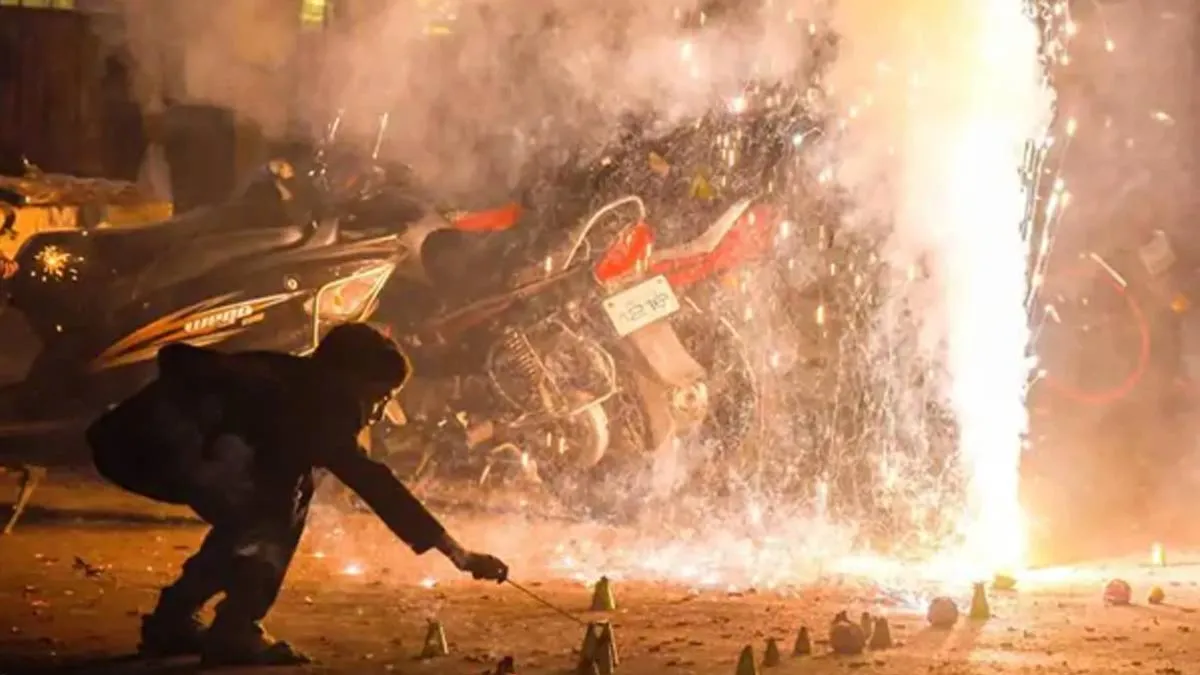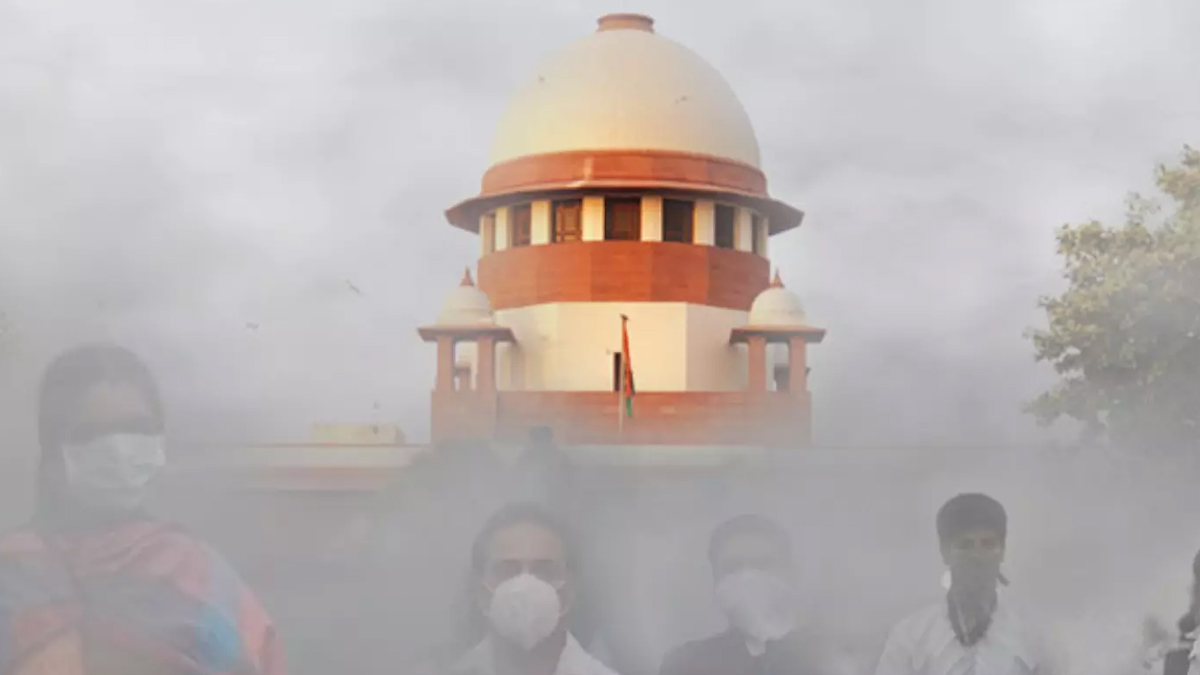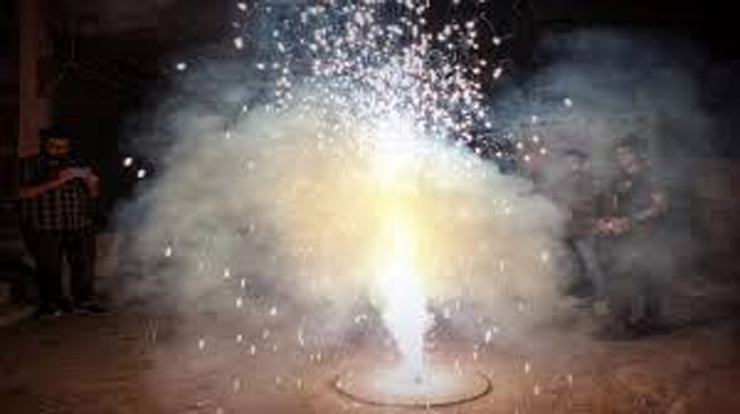
In a significant move to curb the worsening air quality in the National Capital Region (NCR), the Supreme Court of India has directed the governments of Uttar Pradesh and Haryana to impose a complete ban on firecrackers in areas falling under the NCR. The decision underscores the urgent need for unified action across states to tackle the severe air pollution that plagues the region, especially during the winter months.
Table of Content:-
The apex court’s order, delivered by a bench led by Justice Abhay S. Oka and Justice A.G. Masih, aims to align pollution control measures across all NCR states, ensuring consistency in tackling this pressing environmental crisis.
The Need for a Unified Ban on Firecrackers
The Supreme Court’s directive comes as part of ongoing litigation concerning air pollution in Delhi and its surrounding regions. During the hearing, the court noted discrepancies in pollution control efforts across different states. While Delhi and Rajasthan had already implemented a complete ban on firecrackers, Haryana allowed the use of so-called “green crackers.” This inconsistency undermined the effectiveness of the measures, prompting the court to insist on a uniform approach.

The court emphasised that pollution does not recognise state boundaries. If one state allows the use of firecrackers, the toxic emissions can easily spread to neighbouring regions, nullifying the efforts of states that have imposed bans. Justice Abhay S. Oka remarked that the only way to make the ban effective is for all NCR states to follow a coordinated strategy.
GRAP-IV Norms and Enforcement
In addition to the firecracker ban, the Supreme Court also directed the NCR states to rigorously enforce the Graded Response Action Plan (GRAP)-IV norms. GRAP-IV represents the most stringent level of emergency measures to combat air pollution, which include halting construction activities, restricting vehicle movement, and shutting down polluting industries. The court instructed state governments to form dedicated teams to ensure the strict implementation of these measures.
Also Read: Rising Bird Flu Cases in Humans: Experts Warn the Next Pandemic Could Emerge from the US
The Supreme Court’s order to implement GRAP-IV highlights the gravity of the pollution crisis and the need for immediate action to prevent further deterioration of air quality.
Historical Context and Past Challenges
This is not the first time the Supreme Court has intervened to control firecracker use in Delhi and its neighbouring states. In previous years, including after Diwali in 2023, the court expressed dissatisfaction with the poor enforcement of firecracker bans. Despite regulations, firecrackers continued to be sold and used, leading to alarming spikes in air pollution levels.

In a scathing remark, the court had previously criticised the Delhi government for failing to implement the ban effectively, demanding an affidavit detailing the steps taken by authorities to enforce the prohibition. The court even suggested sealing the premises of firecracker sellers and blocking imports from neighbouring states to prevent illegal sales.
Why a Firecracker Ban is Critical
The harmful effects of firecrackers extend beyond temporary air quality dips. The combustion of firecrackers releases a cocktail of toxic pollutants, including particulate matter (PM2.5 and PM10), sulfur dioxide, and heavy metals. These pollutants not only degrade air quality but also contribute to respiratory diseases, heart conditions, and other serious health issues.
Also Read: US Reports Its First Severe Case Of Bird Flu In A Patient In Lousiana
The noise pollution generated by firecrackers also poses risks, especially for children, the elderly, and pets. By banning firecrackers, the Supreme Court aims to address both air and noise pollution, improving overall public health.
Delhi’s Proactive Measures
Recognising the gravity of the pollution crisis, the Delhi government took a proactive step in September 2024 by announcing a blanket ban on firecrackers until January 1, 2025. The ban extended to the manufacture, sale, and online delivery of firecrackers. Delhi’s Environment Minister Gopal Rai emphasised that this measure was essential to maintain clean air during the winter season, a time when pollution levels traditionally spike due to weather conditions and festive activities.
The Path Forward: Challenges and Hopes
While the Supreme Court’s order is a significant step, enforcing the firecracker ban remains a major challenge. Ensuring compliance will require coordinated efforts from law enforcement agencies, local authorities, and the public. Public awareness campaigns will play a crucial role in educating people about the harmful effects of firecrackers and encouraging alternative ways to celebrate festivals.
Environmental experts have welcomed the court’s decision, viewing it as a necessary measure to protect public health and the environment. However, they caution that long-term success will depend on consistent enforcement and widespread public cooperation.
Bottomline
The Supreme Court’s directive to Uttar Pradesh and Haryana to impose a firecracker ban in the NCR region marks a decisive move in the fight against air pollution. By ensuring a uniform approach across states, the court aims to mitigate the severe environmental and health impacts caused by firecrackers. As the region grapples with toxic air, this decision offers a beacon of hope for cleaner, healthier futures for millions of residents.
Also watch this video
How we keep this article up to date:
We work with experts and keep a close eye on the latest in health and wellness. Whenever there is a new research or helpful information, we update our articles with accurate and useful advice.
Current Version